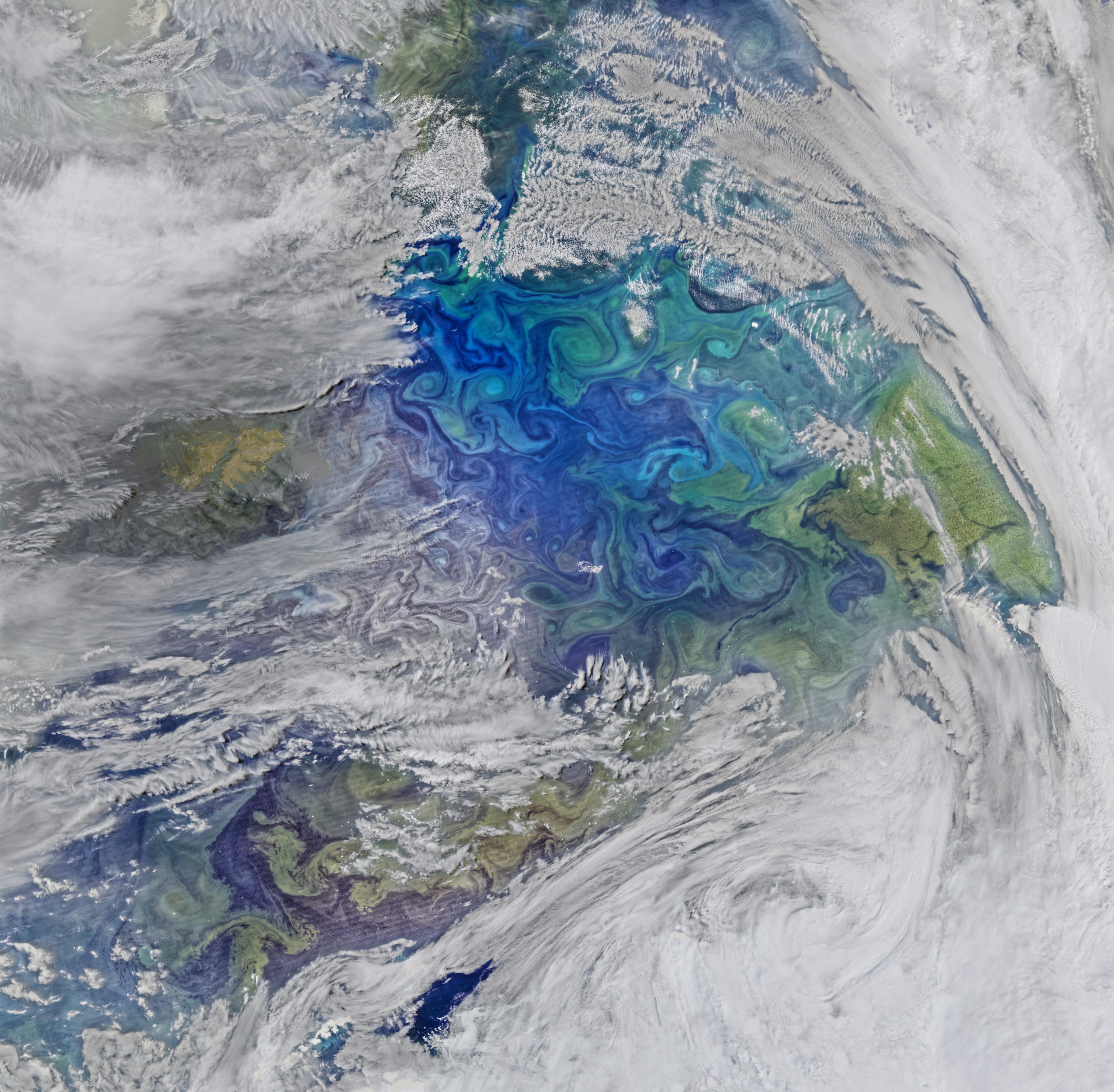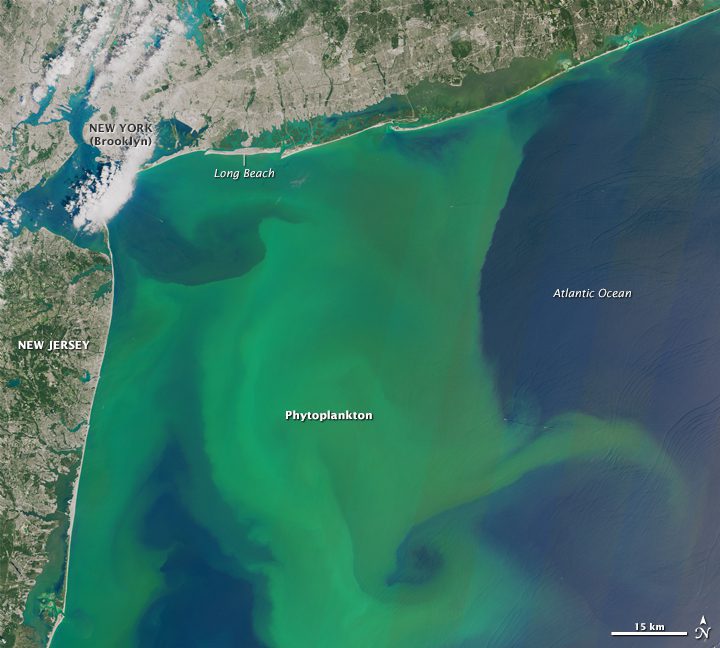As a reminder that spring is relative depending on Earth's hemisphere, phytoplankton blooms, which were especially troublesome in the northern hemisphere's 2015 spring, have now been spotted via satellite in the southern hemisphere's spring.


As a reminder that spring is relative depending on Earth's hemisphere, phytoplankton blooms, which were especially troublesome in the northern hemisphere's 2015 spring, have now been spotted via satellite in the southern hemisphere's spring.

Prodigious phytoplankton growth can be toxic to an ecosystem, suffocating marine life (by depleting the oxygen in the sea) or producing toxins that can sicken and sometimes kill the creatures (including humans) who ingest them.